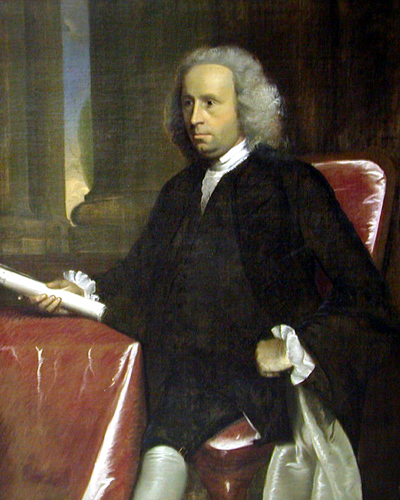
|
View Larger Image |
James Murray, PortraitJames Murray, born in 1713, was Elizabeth Murray’s oldest brother and mentor. After the death of their father in 1728, James began to take an active role in the education and upbringing of his younger siblings. When their mother died in 1737, James, who had migrated to North Carolina a couple of years earlier, returned to Scotland and collected his younger siblings Elizabeth and William. He brought the pair back to North Carolina, where their sister Barbara had settled as well. Over the course of the next two decades, James played an important role as Elizabeth’s advisor and backer in her commercial efforts. A planter and merchant himself, James had business contacts that he turned to for assistance for Elizabeth when she began to keep shop. In the 1750s, James lost all but two of his children to disease, as well as his wife. Widowed in 1758, James came to Boston for an extended visit in 1760. In the 1760s, he relocated to Boston, where his political loyalties led him into conflicts with the town's populace. Eventually, he fled to Halifax, Nova Scotia, with the loyalist exiles in 1776. For more on James Murray, see Nina M. Tiffany, ed., assisted by Susan I. Lesley, with a new introduction and preface by George Athan Billias, Letters of James Murray, Loyalist (1901; rep., Boston: Gregg, 1972); Patricia Cleary, Elizabeth Murray: A Woman’s Pursuit of Independence in Eighteenth-Century America (Amherst: University of Massachusetts Press, 2000). |
||
|
|||
 Portrait of James Murray, ca. 1763, by John Singleton Copley, Courtesy, Currier Museum of Art, Manchester, New Hampshire
Portrait of James Murray, ca. 1763, by John Singleton Copley, Courtesy, Currier Museum of Art, Manchester, New Hampshire

